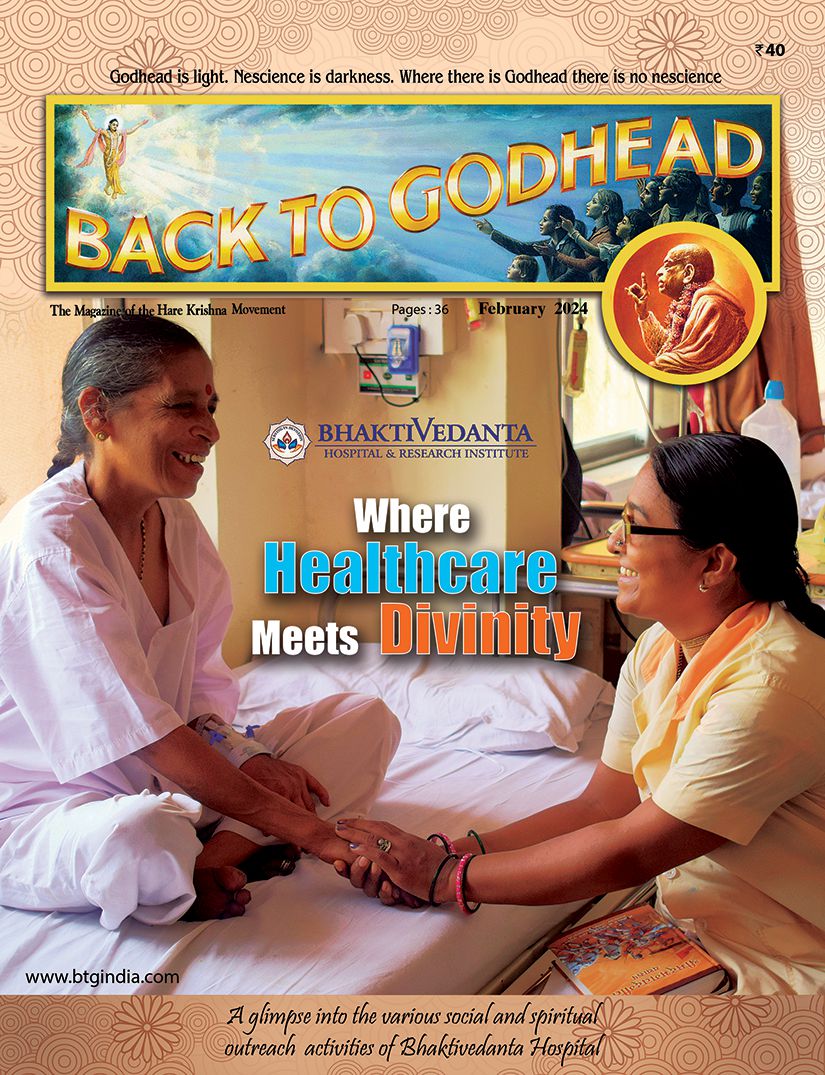LETTERS
Why discuss unscientific things like God, the soul, and rebirth in this scientific age?
This question originates not from scientific thinking, but from a belief in scientism, the peculiar school of thought that places around science a halo of omniscience.
The reputed physicist Fritj of Capra in his well-known book The Tao of Physics explains how scientific knowledge is like a map. Just as a map helps in navigating the mapped territory, science helps in manipulating the physical world. However, a map, no matter how exhaustive, is neither the territory nor a complete description of the territory. Similarly, scientific knowledge, no matter how exhaustive, is neither the reality nor a complete description of the reality. If the map helps us precisely reach a particular house in a city where we meet the owner of the house, will we decide that the owner of the house is nonexistent and imaginary because he is not shown on our map? Obviously not. Similarly, scientific knowledge may efficiently guide us in our exploration of the physical world, but when we encounter essential features of our world that are not found in the world of science – such as emotions, consciousness, free will, and the quest for meaning and purpose – should we reject these as unscientific and so unreal? Obviously not.
Former US President Theodore Roosevelt warned eloquently about the consequences of scientism:
There is superstition in science quite as much as there is superstition in theology, and it is all the more dangerous because those suffering from it are profoundly convinced that they are freeing themselves from all superstition. No grotesque repulsiveness of medieval superstition, even as it survived into nineteenth-century
Spain and Naples, could be much more intolerant, much more destructive of all that is fine in morality, in the spiritual sense, and indeed in civilization itself, than that hard dogmatic materialism of today which often not merely calls itself scientific but arrogates to itself the sole right to use the term. If these pretensions affected only scientific men themselves, it would be a matter of small moment, but unfortunately they tend gradually to affect the whole people, and to establish a very dangerous standard of private and public conduct in the public mind.
In his remarkable book Mechanistic and Non-Mechanistic Science, Cornell-educated Dr. Richard L. Thompson (Sadaputa Dasa) explains how the path of bhaktiyoga taught by Lord Krishna in the Bhagavad-gita constitutes a higher-dimensional science that incorporates God, the soul, and rebirth and coherently explains the essential features of life that modern science can’t explain. Most importantly, the Gita path invites each one of us to experientially verify its truths.
What is the relationship between yoga and bhakti?
With its extraordinary health benefits, yoga has achieved global acclaim. The word yoga comes from the Sanskrit root yuj, which is similar to the English word yoke and means to “connect” or “link.” Patanjali’s Yoga-sutra, the foundational guidebook for yoga, explains that yoga in its completeness comprises eight stages and so is called ashtanga-yoga (ashta – eight, anga – limbs). What is today popular as yoga is actually just one of the eight stages, named asana.
The ancient Indian wisdom tradition that is the source of yoga explains that yoga has much more to offer than what we are currently receiving. In its most evolved form, yoga does much more than heal the body. Its potential goes far beyond even calming the mind. The highest yoga fulfills the need of our innermost being. More than treasures and pleasures, positions and possessions, our deepest longing is for love. All of us want to love and to be loved. In our times, love is a much talked about, little understood word. Often love is misunderstood to be the physical relation between two people, but real love goes beyond the body, beyond the mind, to the real person, the spiritual being. True love enables us to connect with others in an eternal dimension by centering our relationship on the origin of all love.
This art of centering and connecting our love is what bhakti is all about. That’s why bhakti is often called the yoga of love. Bhakti is the universal wisdom that underlies and unifies all the great wisdom traditions of the world. Bhakti effectively fulfills the ultimate purpose of yoga by devotionally connecting our heart with the Supreme Lord, the origin of all love and the pivot of all loving relationships. That’s why Lord Krishna in the Bhagavad-gita, after extolling yoga, states explicitly that bhakti-yoga is the most complete of all yogas: “Of all yogis, the one with great faith who always abides in Me, thinks of Me within himself, and renders transcendental loving service to Me is the most intimately united with Me in yoga and is the highest of all.” Patanjali’s Yoga-sutra also states that the culmination of yoga is samadhi, complete, loving, trancelike absorption in the Supreme.
The yoga of love empowers us to tune our consciousness so that we can receive the love that is at the heart of the creation and then radiate that love to everyone we meet, thus enriching many love-starved hearts with warmth and joy. The easiest way to practice this yoga of love is by chanting the mantra of love, the Hare Krishna maha-mantra.
